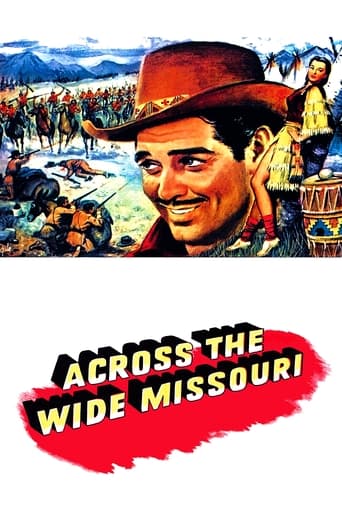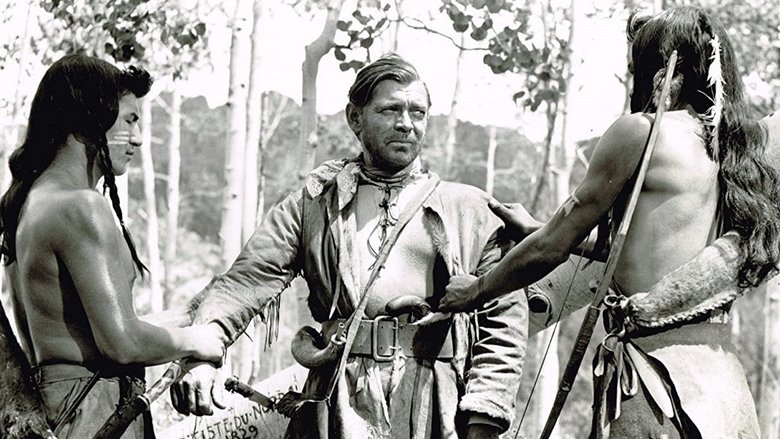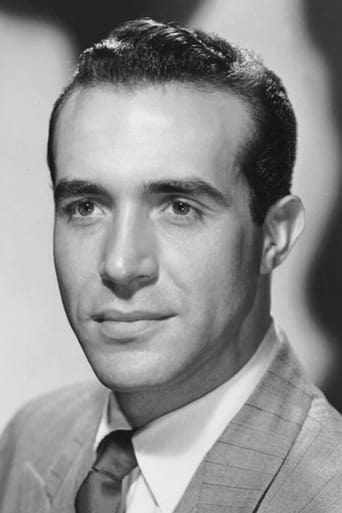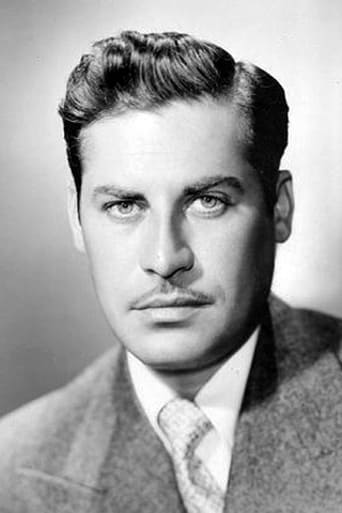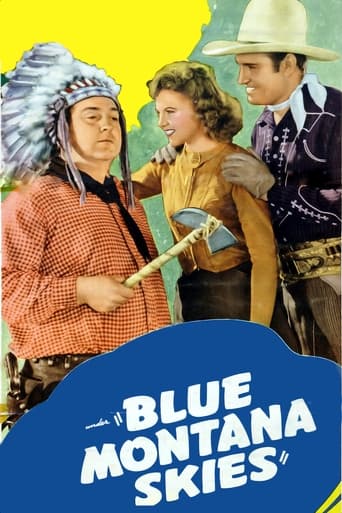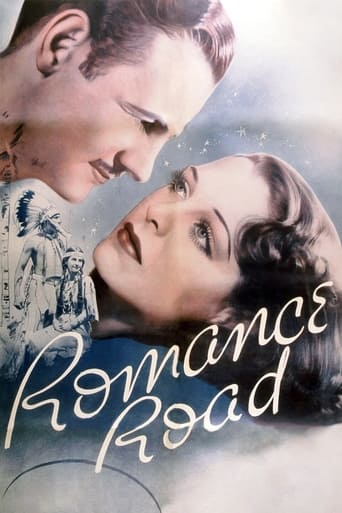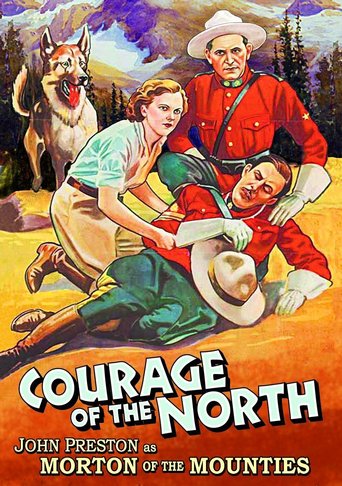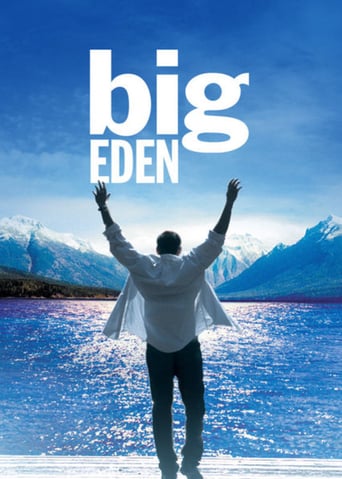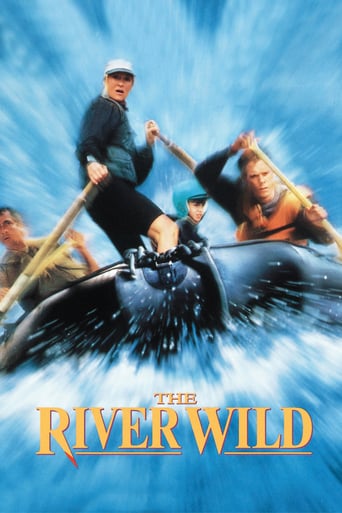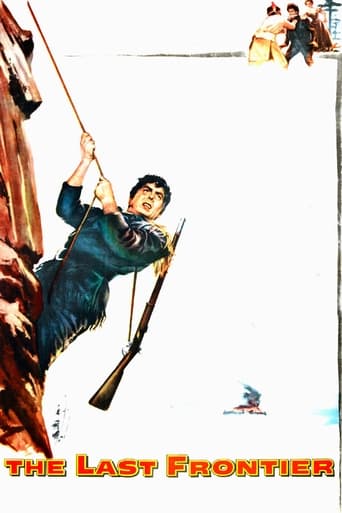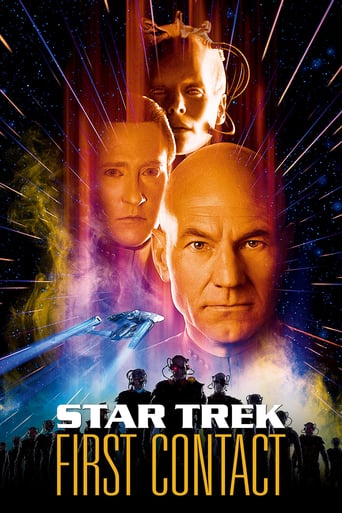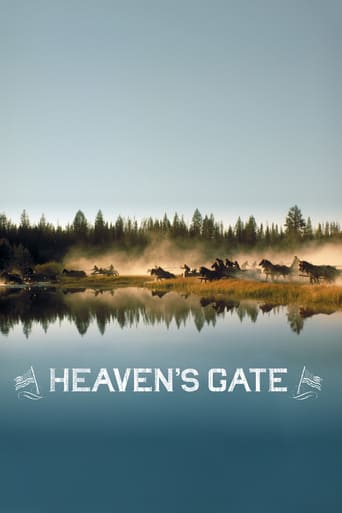Across the Wide Missouri (1951)
In the 1830's beaver trapper Flint Mitchell and other white men hunt and trap in the then unnamed territories of Montana and Idaho. Flint marries a Blackfoot woman as a way to gain entrance into her people's rich lands, but finds she means more to him than a ticket to good beaver habitat.
Watch Trailer
Cast


Similar titles
Reviews
Awesome Movie
Am i the only one who thinks........Average?
Admirable film.
This movie feels like it was made purely to piss off people who want good shows
Bernard DeVoto won a Pulitzer Prize for history in 1948 for his 1947 book, "Across the Wide Missouri." Some sources say that after MGM bought the film rights, the studio threw away everything except the title. That's hardly the case, because this film does a very good job of showing life in the early days of the American Northwest. DeVoto's book, and this film are mostly about the native Indians and the white trappers known as mountain men. The latter were a breed of early pioneers that flourished in the 19th century from about 1810 to the early 1880s. The stage was set for all of this in 1803 when the U.S. acquired the Louisiana Territory from France. The 828,000 square miles doubled the size of the young nation. The purchase brought in all the lands west that drained into the Mississippi River. But most of the lands west of the Missouri River had not yet been explored. President Thomas Jefferson got Congress to approve an expedition to explore the Northwest to the Pacific Ocean. After the Lewis and Clark Expedition of 1804-1806, written accounts of it aroused great interest in the East. The mountain men became the first Americans of European descent to migrate to the region. They went first as trappers and explorers who made their living in the lucrative fur- trade. The mountain men peaked in numbers around 1840, at the time the largest U.S. migration began over the 2,200-mile Oregon Trail. The mountain men helped open the emigrant trails. They explored and lived and dealt mostly at peace with the various Indian tribes. This movie shows all of this very well. MGM filmed the movie in Southwest Colorado, from Durango to Silverton. The spectacular scenery adds to the value and enjoyment of the film. I am a history buff and during the years leading up to and through the 2004-2006 bicentennial of the Lewis and Clark Expedition, I spent most of my summer vacations traveling and visiting sites along the Lewis and Clark route. One of my guides for these trips was "The Journals of Lewis and Clark," written by Bernard DeVoto in 1953. DeVoto and Lewis and Clark give excellent accounts of the Indians of the time. This movie covers two groups that are prominent in the journals – the Blackfeet and the Nez Perce. I wonder how familiar the playwrights might have been with the journals. Their story of the young Indian maiden in the movie is similar to that of a real person with Lewis and Clark. Here, Kamiah is of the Blackfeet tribe. She was captured and raised by the Nez Perce. In the Lewis and Clark Expedition, a young Indian wife of a French Canadian trapper, Toussaint Charbonneau, became an invaluable guide across the Indian lands of the Northwest. She was Sacagawea, a Shoshone Indian from the Snake River country of Idaho. She had been captured by the Hidatsa and taken to their village along the Missouri River in what is now North Dakota. At age 13, she was sold to Charbonneau as a wife.This movie has a large cast of first-rate actors. Clark Gable is excellent as Flint Mitchell. Adolphe Menjou excels as Pierre. Maria Elena Marques is dazzling as Kamiah. All the actors who played major Indian parts were very good. Ricardo Montalban plays Ironshirt, John Hodiak is Brecan, J. Carrol Naish is Looking Glass, and Jack Holt is Bear Ghost. The rest of the mountain men and the supporting cast of Indians add to the historical feel and enjoyment of the film. There was an apparent controversy that arose over this film. From the various accounts I've read, it's not even clear what it was all about. The studio head at the time apparently chopped quite a lot out of the film. Enough, that director William Wellman disowned the movie and said he would never watch it. He alluded to the best action parts being taken out. Apparently, James Whitmore, who plays a mountain man, Old Bill, had much more of a part, and most of his film time was cut out. It would be nice to see a director's cut, which probably no longer exists. But that aside, I think this is still a first-rate film. It has action, scenery and a beautiful story told about a very interesting time and place in America's history. From that standpoint alone, it is much more valuable than the two popular mountain men pictures that were made, "Jeremiah Johnson" (1972) and "The Mountain Men" (1980). "Across the Wide Missouri" is a film that most should enjoy. It's an excellent snapshot of a pioneer period of the American West.
the only thing worth seeing in this film is the scenery of the rocky mountain where it was shot. the camera men did a great job to show us how beautiful this country was, has been, will be(?)- that's big question mark. as usual, the sound track synchronized with every movement of the plots going, not quite annoying as other typical westerns. the storyline is so boring, but most of all, instead of using a young kid's voice to do the narration but a fully grown-up man to narrate the on-going storyline was a big mistake. the matured voice only disconnect the viewers feelings about what's going on. the whole scenario was just so childish and predictable at the best. again, this film is only good for people who like to enjoy and appreciate the scenery of wildness, other than that, nada. no sense to get so excited because of the main character was played by clark gable.
"Across the Wide Missouri" was planned as a sprawling saga of early 19th Century Americana, so there are questions as to how and why it ended up in its present truncated 78 minute form, not much longer than a "B" picture. There shouldn't be any argument that director William A. 'Wild Bill' Wellman's original vision was grander in scope, even epic. Evidence of the cutting can be clearly seen in the cover of the DVD, which duplicates the original one sheet poster. Actor James Whitmore, a big favorite of Wellman's, is given co-star billing and is listed fourth overall in the cast behind MGM leading men Clark Gable, Ricardo Montalban, and John Hodiak and ahead of such venerable character actors as Adolphe Menjou, J. Carrol Naish, and Jack Holt.Whitmore had starred in the director's previous film, "The Next Voice You Hear" in 1951 and had earned an Oscar nomination for his scene-stealing performance in Wellman's iconic 1949 WWII actioner "Battleground." In the released version Whitmore is not billed in the opening credits and does not appear in the 78 minute film until some 33 minutes into the movie. He cannot be spotted with the mountain men in the sizable "Rendezvous" sequence early in the picture and is not seen on the trek over the Rockies until they're halfway there when he suddenly appears out of nowhere on top of a snow-covered mountain. For the remainder of the film he has only a handful of unimportant lines, which makes one wonder why one of Hollywood's most respected character actors would be squandered in what is essentially a bit role. Among the many ironies associated with this film is that, according to studio records, his character's name is "Bit."Wellman's MGM contract had concluded with the completion of "The Next Voice You Hear," but when Metro found themselves without a director for their scheduled epic, they asked Wellman to helm the film. 'Wild Bill' agreed on the condition that he be allowed to bring his family along with him on location - at the studio's expense, an offer he couldn't refuse when MGM agreed to his request. With three A-list stars, an exceptional supporting class of character actors, and breathtakingly beautiful locations, it should have been a blockbuster. It wasn't. The blame, if any, can be laid at the feet of studio boss, Dore Schary, who undoubtedly panicked after attending a preview when he found that the audience that had cheered the opening credits "lost interest" about halfway through. Producer Sam Zimbalist, who wasn't involved with the picture, suggested drastic cuts to be bridged by an afterthought narration by Howard Keel. Although scripted by Talbot Jennings, one of the film's co-writers, the narration is leadenly heavy-handed and overly literal and drowns the director's visual subtleties. An embittered Wellman remarked, " They cut out all the action and put in a narration to fill the holes. This was a good, long picture the way I made it. I've never seen it and I never will." Ironically Wellman re-signed with MGM, and his next picture, "Westward the Women," covered some of the same territory as "Missouri," albeit more successfully.An added irony is that the same Dore Schary, supposedly the most literate and tasteful of all studio heads in Golden Age Hollywoosd, was a serial offender. Only a few months earlier he butchered John Huston's brilliant adaptation of "The Red Badge of Courage" down to "B" picture length of a mere 69 minutes with bridging narration spoken by non-other than... James Whitmore!One last sad irony... as I write this review, news that Judy Lewis, age 76, passed away today is on the Web. She was the secret love child of Clark Gable and Loretta Young, conceived during the filming of another Wellman Western epic, "The Call of the Wild" in 1935. Miss Young never acknowledged that Lewis was her biological daughter and claimed she was adopted. Lewis' memoir "Uncommon Knowledge" was published in 1995.
One of the most frustrating things in cinema is that of the interfering studio. Too many films, since cinema became the medium so massively loved by so many, have fallen victim to this most poisonous fly in the cinematic ointment. One such film to suffer greatly is the William A. Welman directed Western, Across The Wide Missouri. All the elements were in place, a fine story written by Talbot Jennings & Frank Cavett, which is worked from Bernard DeVoto's historical study of the American fur trade in the 1830s. Wellman (The Call Of The Wild/Beau Geste/Battleground) at the helm, Hollywood's golden boy Clark Gable in the lead, and a sumptuous location shoot around the San Juan Mountains to be photographed by William Mellor. With all the talk coming out of MGM that they wanted to make an "epic" picture, hopes were high for the early 1950s to have a Western classic on its hands. Enter studio boss Dore Schary who promptly cut the piece to ribbons. So much so that the film, where once it was epic, is now a choppy and episodic 78 minute experience. With a narration by Howard Keel tacked on by Schary just so we can try to make sense of what is (has) gone on. Wellman was rightly miffed and tried to get his name taken off the credits.Amazingly, what remains is still a recommended piece of film for the discerning Western fan. The locations are just breath taking, expertly shot in Technicolor by Mellor, at times rugged and biting, at others simply looking like God's garden. This part of the world is the perfect back drop for the story as the white man's greed brings them into conflict with the Native Americans. The film also boasts an array of interesting characters, we got the Scots and the French represented alongside the usual suspects, while the tracking and fighting sequences are expertly filmed by the astute Wellman. It was a tough shoot all told as well. Ricardo Montalban {Blackfoot Indian Ironshirt} was involved in a horse riding accident, the consequence of which would severely affect him later in his life, while stunt man Fred Kennedy suffered a broken neck when his intentional fall from a horse did not go as planned. The horses too you can see really earned their oats, trekking up hill across sharp jagged rocks and ploughing through snow drifts, magnificent beasts they be. Joining Gable and Montalban in the cast are John Hodiak, James Whitmore, María Elena Marqués, Adolphe Menjou and Alan Napier. David Raskin provides a suitably at one with the atmosphere score. With Gable on form mixing with the high points that Schary left alone, Across The Wide Missouri is more than just a time filler. But the problems do exist and it's impossible not to be affected by the annoyance that comes with the old "what might have been" that gnaws away at the viewer at every other turn. 6/10

